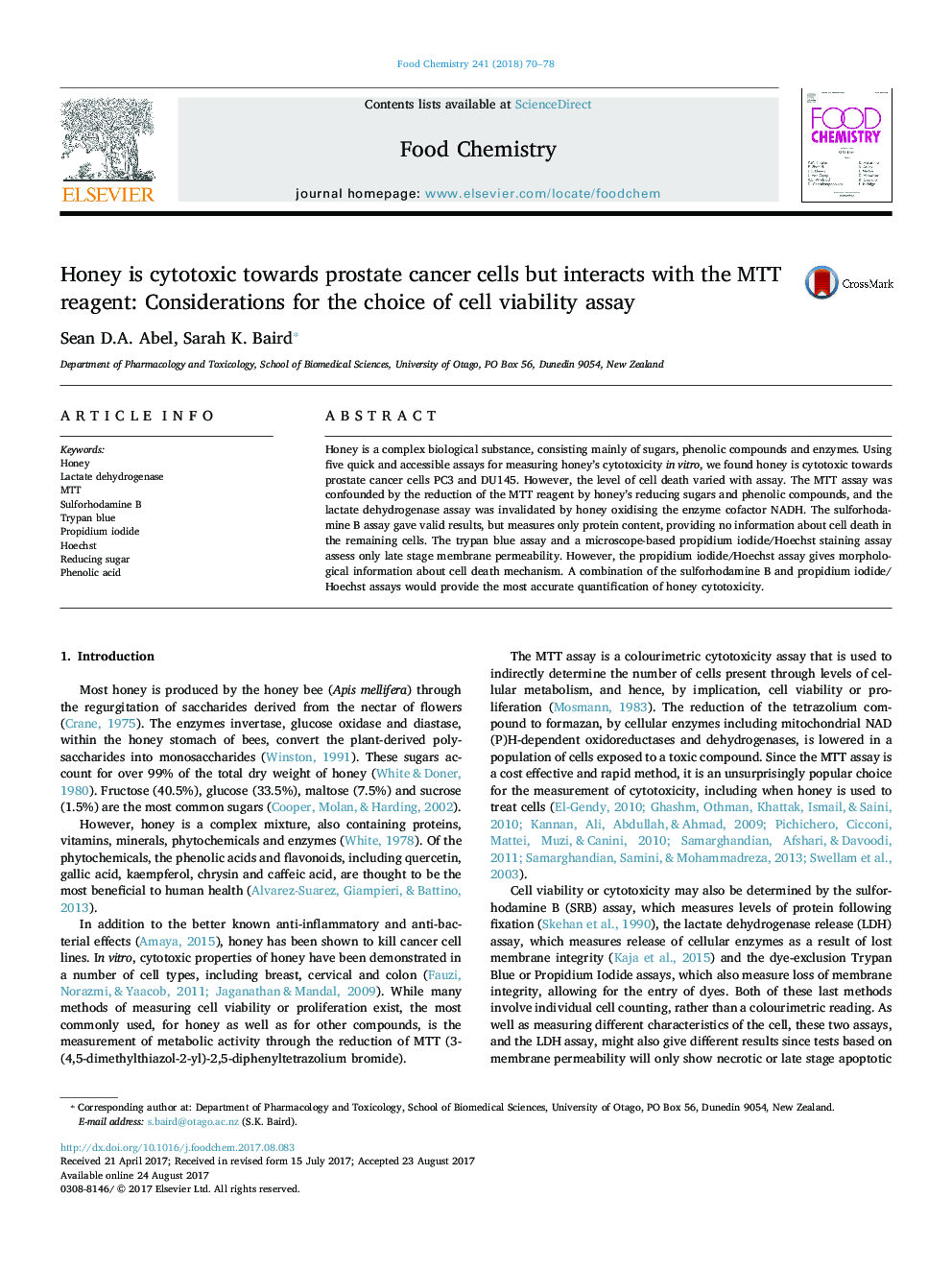| Article ID | Journal | Published Year | Pages | File Type |
|---|---|---|---|---|
| 5133050 | Food Chemistry | 2018 | 9 Pages |
â¢Honey is cytotoxic towards prostate cancer cells.â¢Honey components interact with MTT and LDH assay components.â¢Honey cytotoxicity can be quantified by the sulforhodamine B (SRB) assay.â¢Combine SRB with a membrane permeability assay to better describe honey cytotoxicity.
Honey is a complex biological substance, consisting mainly of sugars, phenolic compounds and enzymes. Using five quick and accessible assays for measuring honey's cytotoxicity in vitro, we found honey is cytotoxic towards prostate cancer cells PC3 and DU145. However, the level of cell death varied with assay. The MTT assay was confounded by the reduction of the MTT reagent by honey's reducing sugars and phenolic compounds, and the lactate dehydrogenase assay was invalidated by honey oxidising the enzyme cofactor NADH. The sulforhodamine B assay gave valid results, but measures only protein content, providing no information about cell death in the remaining cells. The trypan blue assay and a microscope-based propidium iodide/Hoechst staining assay assess only late stage membrane permeability. However, the propidium iodide/Hoechst assay gives morphological information about cell death mechanism. A combination of the sulforhodamine B and propidium iodide/Hoechst assays would provide the most accurate quantification of honey cytotoxicity.
